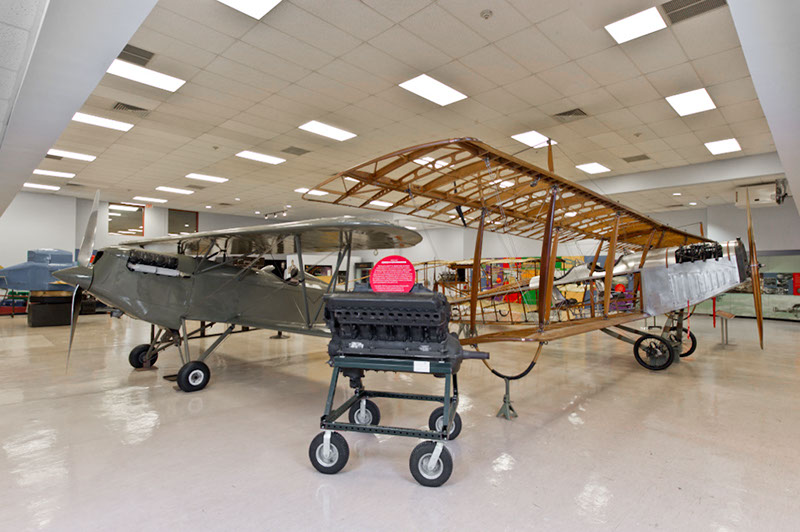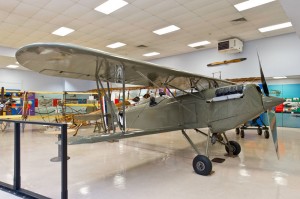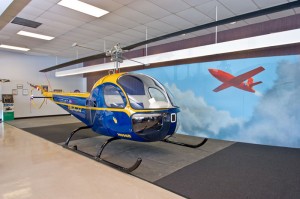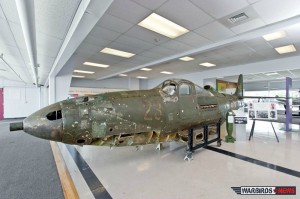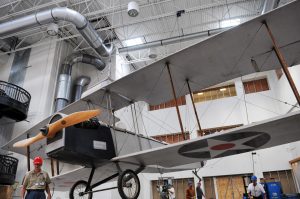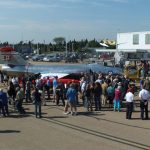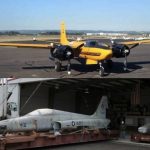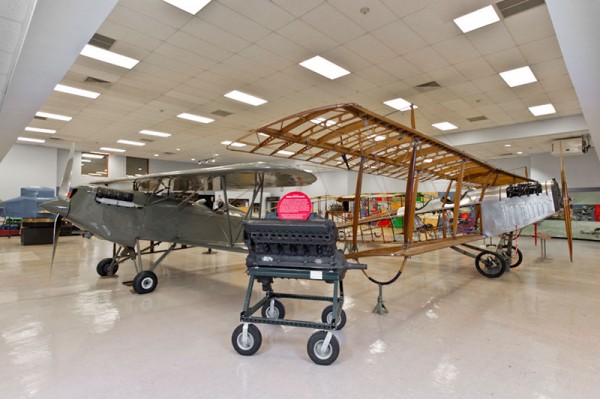
(Image Credit: Niagara Aerospace Museum)
The Niagara Aerospace Museum has recently relocated to a new facility within a former terminal building at Niagara Falls International Airport. The museum is dedicated to preserving the rich aviation heritage of Western New York, and showcasing the aviation and aerospace history the companies that were once vital components of the region’s economy, including Bell Aircraft, Consolidated Aircraft and Curtiss-Wright. With their new facility recently opened, they have been expanding their collection.
(Image Credit: Niagara Aerospace Museum)
Both Bell Aircraft Corporation and Curtiss-Wright Corporation had their corporate headquarters, research & development, and manufacturing operations in nearby Buffalo, New York in the middle of the twentieth century, and the museum has a collection of artifacts and aircraft of the two companies as well as a collection of early to mid-twentieth century piston, turbo-jet, turbo-shaft, and jet engines.
(Image Credit: Niagara Aerospace Museum)
Aircraft on display include a 1917 Curtiss JN-4 “Jenny,” a 1926 Curtiss P-1 Hawk, three early Bell Model 47 helicopters, including Larry Bell’s personal helicopter, a 1955 Bell 47H-1, as well as an example of Bell’s Famous hydrogen peroxide-fueled Rocket Belt. Also on display is an Apollo lunar ascent engine and an authentic NASA Apollo EECOM control station.
One of their more compelling displays is an original and as yet unrestored Bell P-39 Airacobra that was retrieved from a Russian lake in 2005. The plane had sat under about 15 feet of water and buried in silt since it disappeared during a transfer flight in November, 1944. The Airacobra was discovered by fishermen who noticed a plane shaped outline in the bed of the lake looking through the waters below them. Upon retrieval, the plane was discovered to be Bell Aircraft Corporation P39Q-15BE 44-2911, built in Buffalo, New York, one of 4,905 P39Q models produced and of those, 3,291 were issued to the Soviet Union through the Lend-Lease Program.
(Image Credit: Niagara Aerospace Museum)
The plane, when pulled from the lake, was revealed to have the remains of its pilot still inside its cockpit. Missing for 60 years, he was buried on with full military honors at Russia’s Glory Valley Memorial in the city of Murmansk. The P-39 was remarkably complete, only missing the starboard wing’s inboard leading edge, though as one would expect, the plane’s magnesium-based components, the wheel hubs and engine cam covers had dissolved over the years and disappeared.
Another interesting discovery was that the wing machine guns had been removed, and in the areas of the ammunition trays the salvage team discovered cans of stew, packaged by the Beerfoot Farms Company of Southboro Massachusetts packed in among the spare lengths of ammo. The plane’s document case on the starboard door, had survived and managed to preserve the plane’s maintenance and flight records, with only a couple of pages lost to the ravages of being underwater. An excellent accounting of the Airacobra’s service history and retrieval can be found HERE.
(Image Credit: Rich Products)
Another recent addition to the collection has an interesting history. The biplane had been hanging in the atrium of Rich Products, the current owner of the former Curtiss facility, for the past 30 years. The plane which had been loaned to Rich Products by the Buffalo History Museum was believed to be a Curtiss JN-4 Jenny, but in the intervening years it was revealed, embarrassingly, not to be a Curtiss at all, rather it was a to be a Standard Aero Corporation J-1. The Buffalo History Museum had neither the space nor the purview for taking back the famously-crappy, and built in New Jersey aircraft, and Rich Products was remodeling their atrium and no longer wanted an aircraft suspended from the ceiling. It was agreed that the Niagara Aerospace Museum would take possession of the plane. While it does carry a Curtiss engine, the engine mounts are not original and look to be fabricated from common hardware store materials. Close inspection of the plane after it had been brought to the ground showed that while the wings and tail appear authentic, much of the plane’s fuselage contains non-standard parts such as motorcycle wheels for the landing gear, exhaust vents repurposed from home air conditioning systems, no instruments, and painted plywood standing in for the radiator and seats. The museum would like to eventually restore the old plane and put it on display, but museum officials expect that it could take years to restore the plane to authentic condition.







